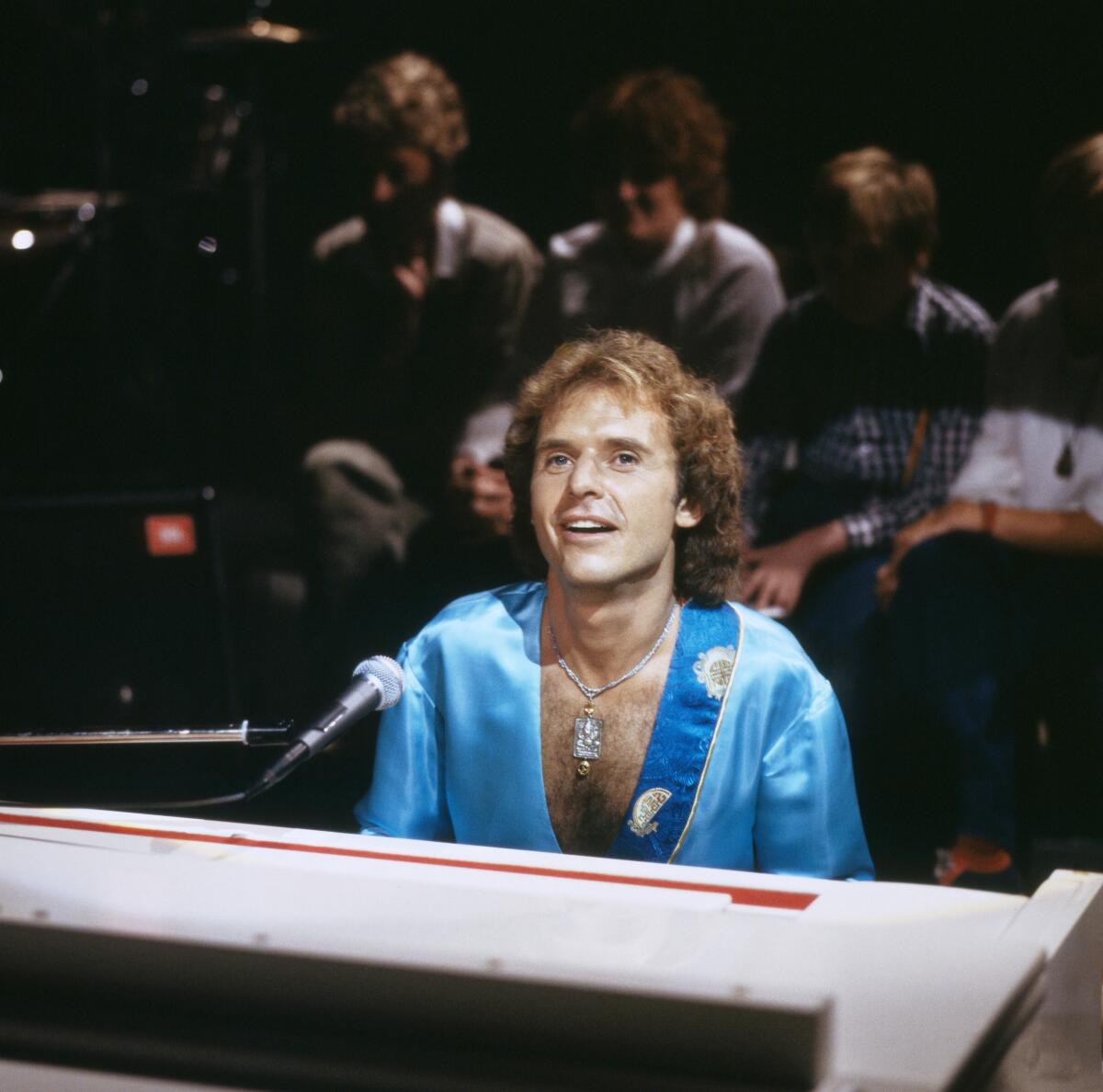With 1975’s spooky, synthy ‘Dream Weaver,’ Gary Wright ‘saw the future’

- Share via
It says something about Gary Wright’s “Dream Weaver” — about its eerie atmosphere and its immersive sensuality — that the song both inspired Wes Craven to create “A Nightmare on Elm Street” and soundtracked the stirring of Mike Myers’ loins as he beholds Tia Carrere in a scene from “Wayne’s World.”
A plush soft-rock ballad with images of “starry skies” and “highways of fantasy,” “Dream Weaver” was the title track from Wright’s 1975 solo album, which followed nearly a decade of work he did as a member of the bluesy proto-metal band Spooky Tooth and as a session player for the likes of George Harrison (on his post-Beatles “All Things Must Pass”) and Harry Nilsson (on his chart-topping cover of Badfinger’s “Without You”). Yet for all Wright’s classic-rock cred, “Dream Weaver” — the biggest and most enduring hit by the artist who died Monday at age 80 at his home in Palos Verdes Estates — also looks ahead to the rise of synth-pop, its densely layered keyboard textures anticipating a world in which the electric guitar no longer predominated.
“I think Gary saw the future,” said David Foster, the veteran producer, songwriter and studio musician who played on “Dream Weaver” alongside Wright and drummer Jim Keltner. “And of course ‘Dream Weaver’ sort of sounds like the future with all those fluttering synthesizers in the background. I swear, that record sounds as good today as it did almost 50 years ago.”

It was Harrison’s gift of a book of Indian poetry that set Wright toward composing the tune. Performing with Ringo Starr at L.A.’s Greek Theatre in 2008, he recalled “browsing through it one night and I came across this line that said ‘When at night my mind weaves dreams.’ And I opened my songwriting journal and I wrote down the words ‘dream weaver.’”
Wright demoed the songs from the “Dream Weaver” LP on an array of then-novel electronic instruments, which he’d gotten interested in shortly before leaving Spooky Tooth. When he played the demos for his label, Warner Bros. Records, an exec asked whether he planned to flesh out the music with more traditional rock instruments.
“I said, ‘I don’t think so. I don’t think it needs guitar,’” Wright told Mix magazine in 2009. “At that stage, I was kind of off guitars. I had played so much with guitar-heavy bands, I said, ‘I’ll just leave it as it is and do an all-keyboard album.’”
Foster, who went on to shape the glossy surfaces of hits like Earth, Wind & Fire’s “After the Love Has Gone” and Chicago’s “Hard to Say I’m Sorry,” credits Wright with introducing him to the potential of the synthesizer. “He’d say, ‘Go and touch that key over there on that machine,’ and I touched this key and a string sound came out,” Foster told The Times. “I was like, ‘What the hell is that?’”
Yet “Dream Weaver” retains a human touch that keeps the song on Earth despite its spacey ambience. “Gary was a soulful cat, and it’s a very soulful record,” Foster said. Keltner gently swings the song’s rhythm, which adds a hint of blue-eyed soul; Wright’s vocal is airy but impassioned — a little frayed at the edges, as though he knows the dream is destined to end.
Indeed, a current of dread courses through “Dream Weaver,” which opens with a chilling, slightly discordant synth tone that Craven reportedly sought to emulate in the score for his landmark horror film. Foster said he remembers Wright instructing him to “do some scary music” on the Fender Rhodes electric piano during the song’s intro, before it “settles down and blossoms into this beautiful groove.”
“Dream Weaver’s” strange blend of elegance and foreboding drove the song to a No. 2 peak on Billboard’s Hot 100, behind the Four Seasons’ “December, 1963 (Oh, What a Night)” and ahead of Captain & Tennille’s “Lonely Night (Angel Face),” Eric Carmen’s “All By Myself” and Johnnie Taylor’s “Disco Lady.” (Also in the top 10 that week: Aerosmith’s “Dream On.”) In 1995, the “Dream Weaver” album was certified double platinum thanks in part to the single’s revival in Penelope Spheeris’ blockbuster 1992 “Wayne’s World” movie.
Back in the ’70s, Wright’s LP spawned another hit in “Love Is Alive,” which also reached No. 2. That song was covered by the likes of Chaka Khan, Joe Cocker and Olivia Newton-John; its swaggering beat has been sampled by hip-hop acts including 3rd Bass, Tone Loc and Salt-N-Pepa.
But “Dream Weaver” has proved less readily adaptable to interpretation. In his weird and luscious signature song, Wright captured something indelible and irreproducible — a vision of tomorrow haunted by the memory of yesterday.
More to Read
The biggest entertainment stories
Get our big stories about Hollywood, film, television, music, arts, culture and more right in your inbox as soon as they publish.
You may occasionally receive promotional content from the Los Angeles Times.










